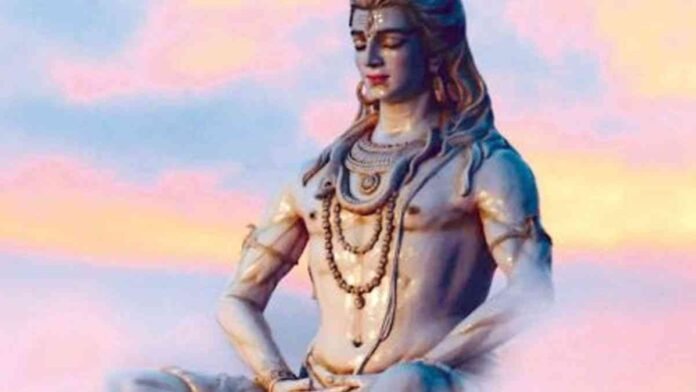On July 10, the first Sawan Somwar fast will be observed. You should keep the following nutritional advice in mind while fasting throughout the month of Shaván.
Shravan or Sawan, an auspicious month, has begun and will be marked by a number of significant fasts and festivals, including Teej, Raksha Bandhan, Jasnmashtami, and Nag Panchami. Lord Shiva worshippers all throughout the nation regularly observe Sawan Somwar fasts, and it is thought that those who observe them are blessed with luck, fortune, wealth, and the fulfillment of their aspirations. While married ladies offer prayers for the health and happiness of their families, single girls celebrate Shravan Mondays in an effort to find a suitable partner.
The month of Sawan this year started on July 4 and ended on August 31. On July 10th, the first Sawan Somwar fast will be held, and on August 28th, the last. Fasts during Sawan Somwar have religious significance as well as a chance to cleanse your digestive tract. It’s vital to limit your intake of sugary and fried foods because they can be more harmful than beneficial. Our health can be improved and our ability to meditate and worship Lord Shiva is improved by include satvik foods like fresh vrat-friendly fruits and vegetables, nuts and seeds, and dairy products like milk, curd, and paneer.The new sawan season has started, and many people keep Monday fasts at this time. these fasts.
“Sawan season has returned, and at this time, many people fast on Mondays. Such fasts have health benefits in addition to serving religious purposes. They are ideal for purifying and rejuvenating the body, calming the mind, and calming the soul.
Dietary advice for the Sawan Somwar fast
1. Consume little and often
You shouldn’t starve yourself when you fast. The goal of this fast is to consume superfoods, which support the body’s immune system and are light on the digestive tract. Eat little, often, and lightly. This prevents a dip in blood sugar levels and maintains a balance in energy levels.
2. Hydration is important
Water intake is crucial while you are fasting. Most of the time, when we feel hungry, we simply just need to drink more water. Dehydration also contributes to problems by making a person feel languid and lethargic. Keep drinking water, buttermilk, coconut water, lemon water, etc. Electrolyte replenishment is just as important for the body as drinking enough water.
3. Add vegetables to potatoes
Now, this is something that is crucial to comprehend. Tuberous vegetables like as potatoes, sweet potatoes, colocasia, etc. are permitted during this fast. Consuming only starchy veggies will result in a sharp rise in blood sugar levels. So, add any fiber vegetable to the dish, such as spinach, tomatoes, pumpkin, etc., to balance the meal.
4. Examining cooking techniques
The next piece of advice is to cook in a way that balances nutrition and calories. Superfoods like buckwheat, amaranth, potatoes, sweet potatoes, etc. that are ingested during such fasts are all packed with vitamins and minerals. We all know that the majority of these are heat labile, meaning that heating them at high temperatures causes the nutrients in them to be lost. Therefore, the key is to refrain from deep-frying veggies. Use a variety of cooking techniques, such as grilling, roasting, and baking. In addition to having a decreased caloric content, this will maintain the nutritious value.
5. Introducing amaranth protein to wean
Weaning, as I use the term, refers to the ‘introduction’ of solid or liquid foods to the infant. Here, the importance of giving Indians amaranth grain is apparent. Rajgiri/seel (local names) is a rich source of protein from all the foods allowed in the sawan fast (4g / 30g), albeit it is not frequently ingested. Dairy products, ideally the low-fat varieties, also contribute to the “nutrient containing nitrogen.”
6. Indulge in some buckwheat
To create rotis, uttapam, dosa, etc., use kuttu ka atta. It is a pseudocereal with significantly more iron (4.65 mg/30g) than wheat, rice, or ragi. Additionally, compared to other cereals, its protein concentration is comparable to higher levels.
7. The sweet tooth truth
When fasting, the mind can fall prey to desires because it is aware that specific meals must be avoided. Pumpkin halwa, samai rice kheer, makhana kheer, dates, dates and walnut lassi, fruit raita, etc. can all help with sugar cravings.
8. Swap jaggery for sugar
Now choose jaggery or gur instead of refined sugar. The Sawan fast follows a Satvik diet, which excludes refined and processed foods. It is additionally healthier than sugar. Also rich in iron is jaggery.
9. Get a good night’s rest
Fasting requires your body to relax and rest. A person will remain alert with 7-8 hours of quality sleep. Additionally, getting enough sleep lowers hunger cravings and encourages weight loss. Boredom and sluggishness encourage appetites.
10. Nutritious dairy product
A glass of milk always makes the Indians complete. The milk that has been cooked to thicken it by evaporating its water is known locally as kadha hua doodh. This can be flavoured with things like cardamom, kesar, etc. The stomach feels completely satisfied as a result. Additionally, since paneer and lassi contain significant amounts of pre-biotics, they can be consumed to maintain intestinal health and detoxify the system. Choosing skim milk over full-fat milk is preferred.




